'A magnificent experiment in the domain of the uncustomary'
The Women's Jubilee Dinner of 1897 - part 1
Welcome to Women Who Meant Business. On Saturday mornings, once every two weeks, you can enjoy stories about entrepreneurial women and get ideas about related things to see and do. Happy reading… and if you enjoy it, spread the word.
The summer of 1897 was a time for celebration as the country marked the sixtieth anniversary of Queen Victoria’s reign. On the 20th June, thanks were given in a private service in Windsor and two days later a grand parade processed through the streets of London, led by Queen Victoria in an open carriage. Celebrations continued for a fortnight. There were street parties, a state banquet and a Royal garden party.
The hottest ticket in town was an invitation to the lavish fancy dress ball held at Devonshire House on 2nd July. Lafayette set up a photography studio in the gardens and nearly 300 photographs survive of guests in their elaborate costumes. Attended by the Prince and Princess of Wales, a host of royals from across Europe and ‘all the celebrated and important personages in London’, it was the event of the year, if not the decade.
However, the Jubilee party that interests me took place nearly a fortnight later. It received relatively little coverage at the time apart from in publications aimed at women like The Queen and The Gentlewomen; there are no photographs; and if you google it now, you won’t find anything about it. Yet I would argue that it is of greater historical importance than the Devonshire House extravaganza.
On the evening of 14th July, one hundred women, all ‘genuine workers’, and their guests gathered for the Women’s Jubilee Dinner to mark, with regard to employment, ‘the great change in the position of the sex.. which has been wrought during the present record reign of a woman.’1
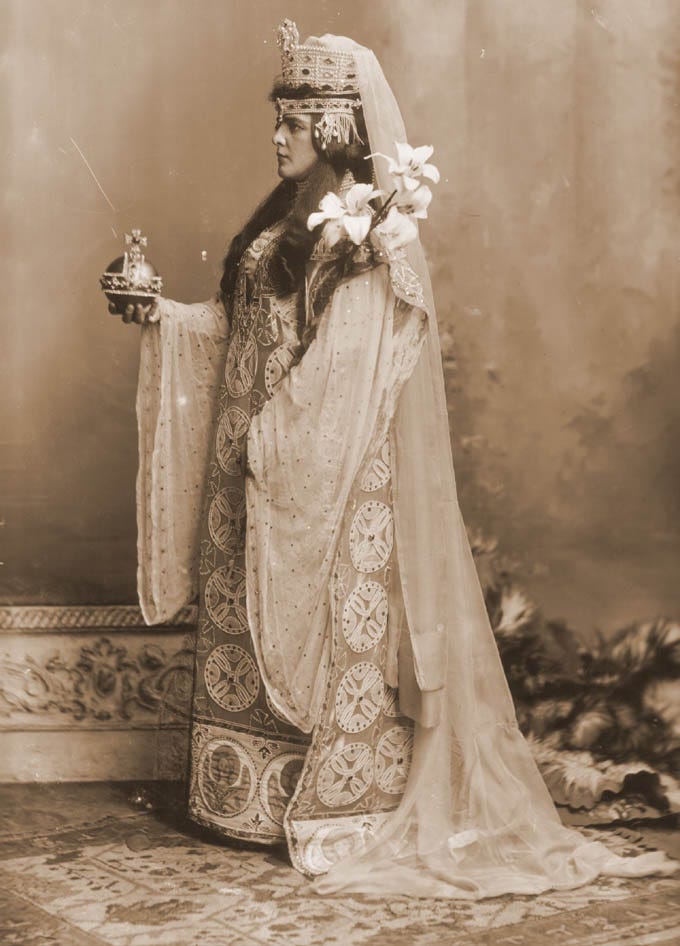
Who was there?
The guest list of one hundred ‘representative women’ was put together by a committee of fifteen. Helping identify women in medicine, science, academia and education were Dr Elizabeth Garrett Anderson, the astronomer Agnes Clerke and Jane Harrison, a leading classical scholar. For the arts were the singer Mary Davies, the composer Maude Valérie White, the painter Clara Montalba and Ellen Terry, everyone’s favourite leading lady. There were three writers: Lucy (Mrs W.K.) Clifford; Mary (Mrs Humphrey) Ward and Flora Shaw, Colonial Editor of the Times and the highest paid woman journalist in the country.
The other members were Millicent Fawcett, Mary Kingsley, who had been touring the country giving lectures about her expeditions to West Africa, and two Ladies with their fingers in multiple pies, Lady Mary Jeune and Lady Dorothy Nevill. Keeping them on track and in check was the writer Flora Annie Steel. Although many of these names might be unfamiliar (or at least were to me five years ago when I started my project) Mary Davies is the only one who is not (so far) included in the Oxford Dictionary of National Biography.
Between them they drew up a long list of women aiming for another 85 acceptances to reach the magic number of 100. The majority of the women who were there on the night came from medicine, science, the arts and education but there were also trailblazers in business, economics and the civil service and successful business women such as Agnes Garrett, who had set up an interior decorating business with her cousin, Rhoda, two decades earlier, and Emily Ward, who created the Norland Nanny. Differences in politics and positions on women’s suffrage were put aside for the night.
Then came the ‘new departure’2: each woman who accepted was asked to invite ‘a distinguished man’ as their guest, ideally from their own profession and preferably not their husband.
The response of the general press to the dinner ranged from amusement to mockery. ‘The entire male world is in a flutter now of palpitating hope now of sickening despair over the invitation to the Women’s Jubilee Dinner’.3 ‘Who will the Hundred Male Notables turn out to be? The thing has been talked about for days and days past and terrible has been the alarm in the household of many a man who counts himself to be somewhat as post succeeded post and no invitation came.’4 ‘Here was a wholesale reversal of the old story of Paris and the golden apple...the vibration was felt from the Foreign Office to the editorial sanctum of the Daily Chronicle.’5. Yet behind the jibes there is a sense of a slight sense of disquiet at this momentary loss of control.
The dinner
As the clock ticked around to 7.30pm, the Mayfair streets were clogged with carriages as the hundred women, from their late 20s to their early 60s, made their way to the Grafton Galleries.
Dinner was set for 8pm but ‘with a charming assumption of independence’ all the ladies had been asked to be there half an hour earlier to look at the table plans and await their guests. There was no red carpet but many of the women’s outfits merited a description in reports of the event.
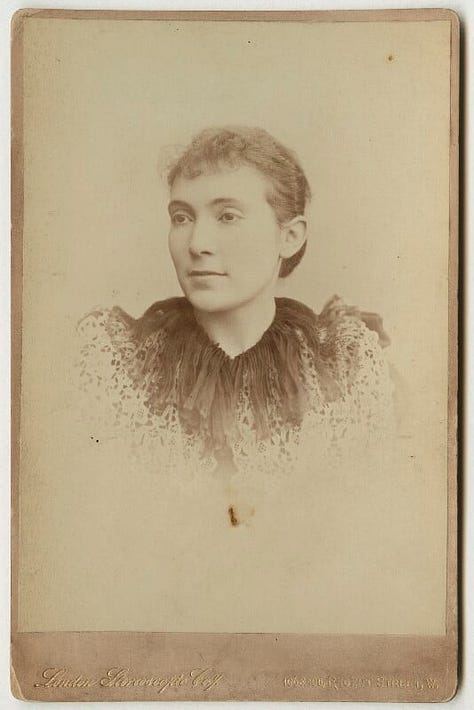
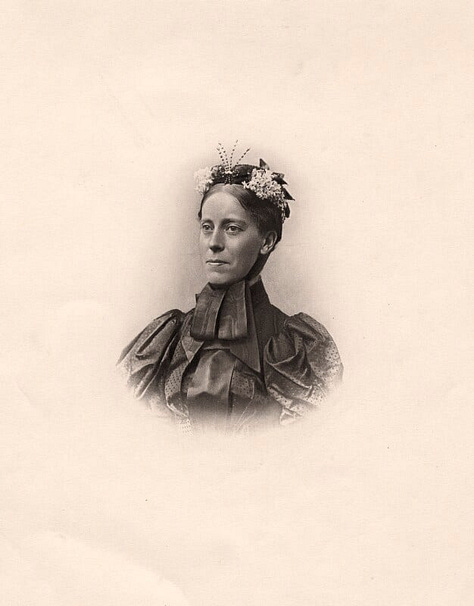
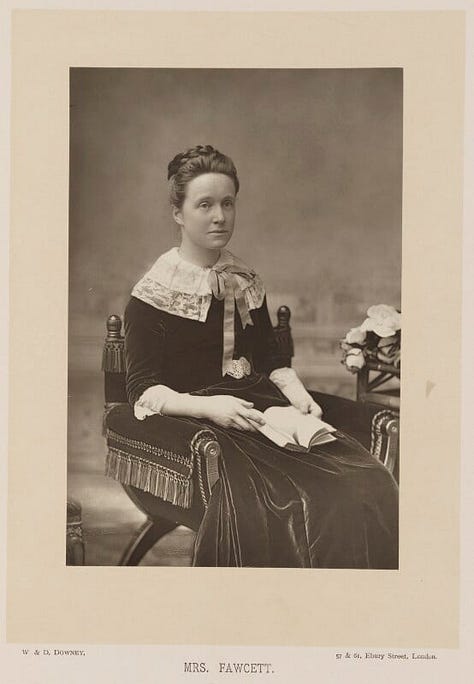
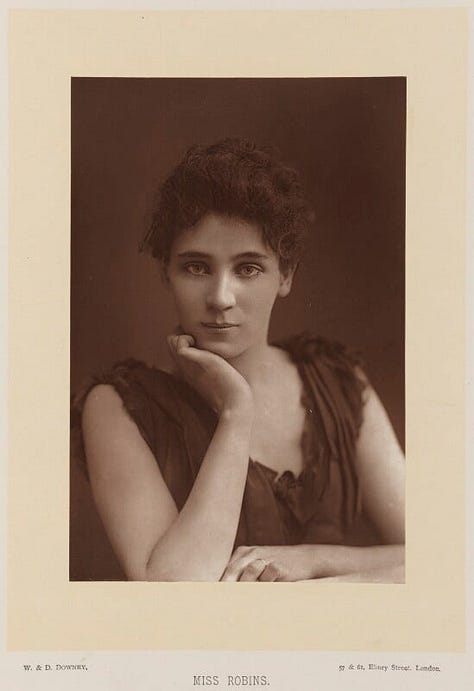
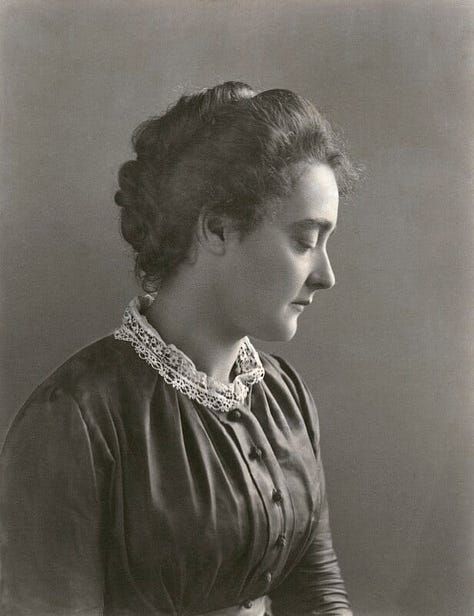
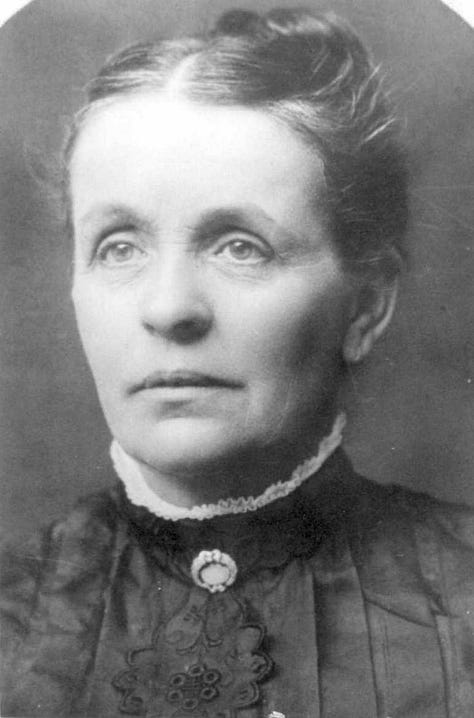
As the women greeted one another, the men started to arrive. Thomas Hardy, John Singer Sargent, Anthony Hope and Charles Booth and Henry Morton Stanley (of Livingstone fame) were among the artists, writers, composers, politicians, soldiers, medics and lawyers who were checking one another out as they looked for their hostess.
When guests entered the dining room, they were met with seventeen round tables arranged in three rows, one decorated in rose, one in ivory and the last in light blue. Bunches of cornflowers adorned the candlesticks and scarves of white muslin worked in gold metallic thread brought a glitter to the table. Roses were strewn over the pedestals of columns and balls of roses and lilies hung overhead.
Each table seated twelve, allowing for easy conversation, helped along by liberal quantities of Riesling, Bordeaux and Pol Roger. There were only three speeches, one from Flora Annie Steel, one from Lady Isabel Somerset, and a response from the Bishop of London, Mandell Creighton. There was much laughter as traditions were upended, with the two ladies addressing the assembly as gentlemen and ladies and the ladies standing to drink the health of their guests while men stayed seated. The dinner was in just two hours, ‘one of the shortest on record’ so that the dinner guests could join another 500+ men and women for a reception, including Walter Crane, Henry Irving, Jerome K Jerome and James McNeill Whistler. Actors Sarah Bernhardt and Gabrielle Rejane and the soprano Emma Albani all gave performances.
The evening was voted ‘a brilliant success’ and then quickly faded from memory. Yet now, more than a century later, I think this event remains firmly in the ‘domain of the uncustomary’ in terms of both scale and format and so for that reason alone should be remembered.
The context
How might some of these women have been feeling as they tucked into their twelve-course meal including Consommé Pompadour, Chicken Supreme à la Sappho and a special Jubilee pudding?
The fourteen doctors must have been feeling quite satisfied. The London School of Medicine for Women was celebrating twenty years of partnership with the Royal Free Hospital and in 1896 had welcomed fifty students, a record numbers. Women were now admitted to the British Medical Association and the The New Hospital for Women on Marylebone Road was also thriving.
The mood amongst those from the worlds of education and academia was probably mixed. Beatrice Webb could reflect with pride on her role in the founding of the London School of Economics two years earlier; however, although most universities now awarded degrees to women students, Oxford and Cambridge were still holding out, despite the efforts of many in the room. Two months earlier, an effigy of the ‘New Woman’ had swung from a lamp-post in Cambridge amid student rioting when a change was mooted. Women studying at Oxford would have to wait another 24 years; those at Cambridge would only be given equal status in 1948.
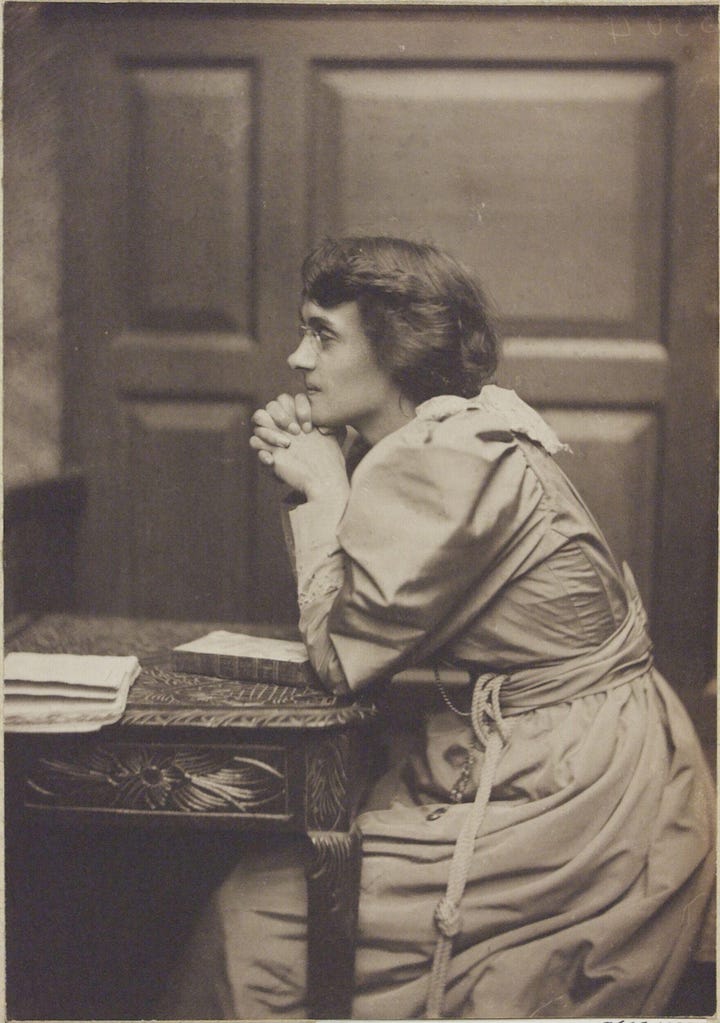
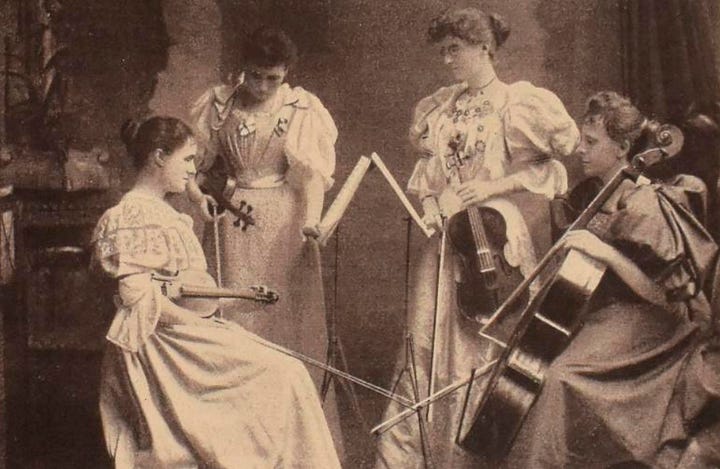
Women had been employed as in the civil service since 1869, when the government took over the running of the Post Office, but a Royal Commission of Labour, set up in 1891 to explore labor relations and working conditions for industrial workers, had proved a game-changer at the leadership level. Four women were appointed as assistant commissioners and a whole cadre of women were recruited to prepare their reports. This gave several women an entry point into senior roles in the civil service and adjacent fields.
Adelaide Anderson had subsequently been recruited as a Lady Inspector of Factories, Clara Collet now had a position at the Board of Trade and Janet Hogarth was Superintendent of Women Clerks at the Bank of England. However, there were already signs of resistance: in 1895, alarmed at the in-roads women were making into their workplace, the Civil Service had placed joined the Post Office in instating a ban on married women continuing to work. It would remain in place until 1946 (and in the Foreign Office until 1973).
Hertha Ayrton was there, ‘the only woman, I believe who has invented a scientific instrument’, remarked one columnist, incorrectly. 6 However, Victorian women were not lacking in ideas - in 1896, women submitted over 2,000 patent applications.
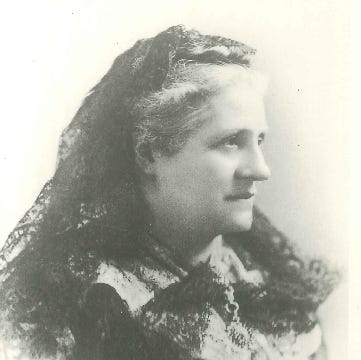
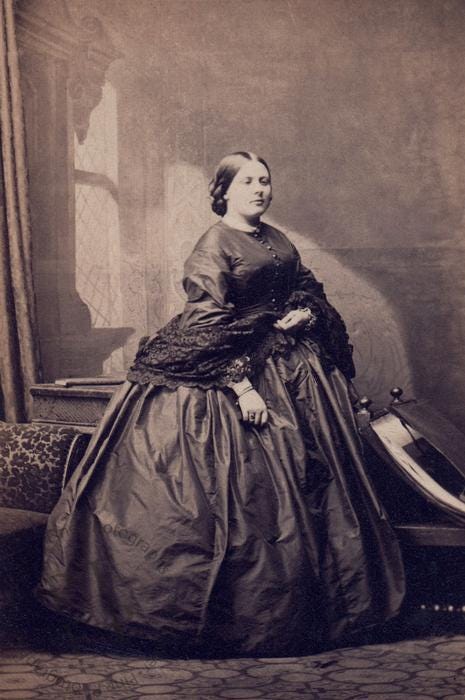
I could go on to look at the position in the arts, journalism, academic scholarship and a range of other fields; but you are probably reeling from the information I have thrown at you or have already disappeared down a Wikipedia / google rabbit hole.
And therein lies the second reason why I think this event is so important. I have only named a third of the women who were there; and yet the scale and breadth of their achievements are, I suspect, at odds with the common perception of what women were getting up to in the Victorian era. Read more about their achievements in Part 2.
By bringing together women from a wide range of fields, this dinner has left a unique, if partial, record. I cover their networks in Part 3.
Finally, because we know in most cases the name of the man each woman chose as her distinguished dinner date, the event gives a unique insight into professional relationships and personal friendships.
This is a topic to which I will return so if there is anything you particularly want to hear more about, make a comment.
As usual, I will round off with a couple of recommendations for things to see and do with direct connections to the women featured in the project.
Going out
Last week a blue plaque was unveiled at 2 Gower Street, recognising the achievements of Agnes and Rhoda Garrett. In 2020, the National Portrait Gallery created three London walking tours celebrating pioneering women (which can also be enjoyed digitally) and this address is already on the Bloomsbury route as it was also the home of Agnes’s sister, Millicent Fawcett. Why not take a look? Or if you want to see some of the furniture Agnes and Rhoda designed, head to Standen House in West Sussex, which has just re-opened after its winter closure.
Staying in
If a trip to London is not an option, why not read about some of its remarkable women instead? Susan Doe has just published a second tranche of stories from women who were born or lived in Hackney Among the 115 entries are suffragettes and a woman you will recognise, Agnes Marshall.
Thanks for reading! Do share your feedback by hitting the like button or leaving a comment. Subscribe for free to stay up to date and support my work.
On Saturday 5th April, I’ll be sharing the story of Betty Joel (1894-1985), the furniture, textile and interior designer who triumphed between the wars. In the meantime you can find more profiles of brilliant women at the dedicated site, Women Who Meant Business; or follow me on Instagram.
The Queen 10/7/1897
Ibid
Daily Chronicle 10/7/1897
London Evening News 14/7/1897
London Evening News 15/7/1897
Bolton Journal and Guardian 24/7/1897






I thought I knew a lot about women in Victorian England, but this gala dinner had completely passed me by. What a fascinating story, thank you
Fascinating